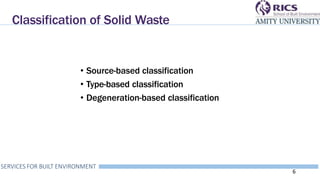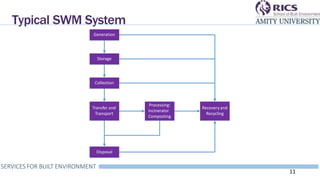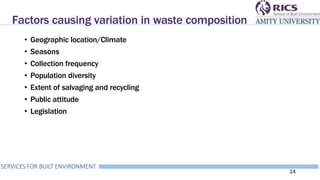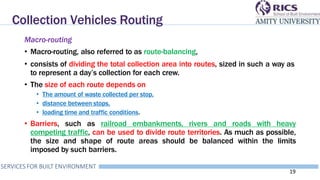The document discusses various aspects of solid waste management including:
1. It provides an overview of different methods of classifying solid waste based on source, type, and rate of degeneration.
2. It describes the typical components of a solid waste management system including waste generation, storage, collection, transport, processing, and disposal.
3. It discusses common solid waste disposal methods like sanitary landfilling, composting, incineration, and their key aspects.






































